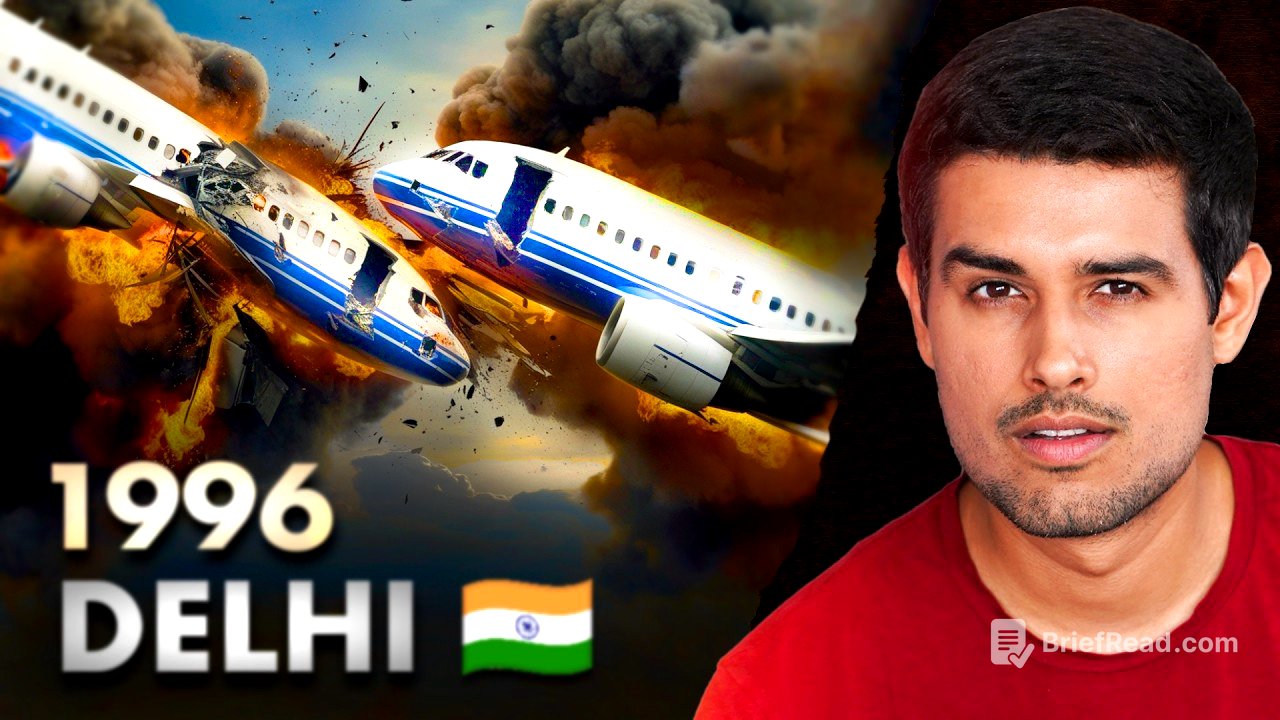TLDR;
This video discusses the 1996 Charkhi Dadri mid-air collision, the worst aviation disaster in India's history, and the systemic failures that led to it. It explains the rules of the sky, the roles of air traffic controllers (ATCs), and the technologies used for air traffic management. The video also covers the changes implemented after the accident, including separated air corridors, mandatory Traffic Collision Avoidance Systems (TCAS), and English language proficiency standards for international pilots, to prevent similar disasters in the future.
- The Charkhi Dadri mid-air collision was the worst aviation disaster in India's history.
- The accident was caused by a series of mistakes, including miscommunication, lack of proper technology, and a single air corridor.
- After the accident, significant changes were made to the aviation system in India, including separated air corridors, mandatory TCAS, and English language proficiency standards for international pilots.
Introduction to the Charkhi Dadri Mid-Air Collision [0:00]
On November 12, 1996, a Kazakhstan Airlines flight from Shymkent to New Delhi collided mid-air with a Saudi Airlines flight departing from Delhi. The Kazakhstan Airlines flight carried traders from Kyrgyzstan heading to India to purchase wool, while the Saudi Airlines flight had Indian blue-collar workers traveling to Saudi Arabia for work. Air Traffic Controller VK Dutta was managing both flights. The collision occurred near Charkhi Dadri, resulting in a shower of debris and marking the worst air disaster in India's history.
Understanding Air Traffic Rules and Technology [3:22]
Airplanes follow set paths in the sky known as airways, which are divided into air corridors to minimize accidents. The height at which airplanes fly is called the flight level, and international standards require a minimum vertical separation of 1,000 feet between aircraft, along with a 14 km radius for safety. Air Traffic Controllers (ATCs) monitor the position, speed, and altitude of aircraft using radar technology. Radars are classified into primary and secondary types. Primary radars detect the horizontal distance of an airplane, while secondary radars, which were not widely used in the 1990s, use transponders on airplanes to provide more reliable information about their position and altitude.
The Swiss Cheese Model and the Mistakes Leading to the Disaster [7:42]
The Charkhi Dadri accident was not due to a single cause but a series of coinciding errors, explained by the Swiss Cheese Model. Initially, Indian officials suspected the Saudi plane of not adhering to the assigned altitude. However, the flight data recorder revealed that the Saudi plane was at the correct altitude of 14,000 ft, indicating that the Kazakh plane had descended from 15,000 ft. The Kazakh pilots were found to have poor English skills and were not fully attentive to ATC instructions, leading to a misunderstanding of the altitude commands.
Systemic Issues and the State of Aviation in the 1990s [10:27]
In the 1990s, following the breakup of the Soviet Union, airlines from newly formed countries like Kazakhstan had questionable safety reputations. The reliance on verbal communication between pilots and ATCs, combined with a single air corridor for both departing and arriving planes, increased the risk of accidents. The absence of secondary radar technology further complicated the process, making it difficult for ATCs to accurately monitor aircraft altitude.
Changes Implemented After the Disaster [11:32]
Following the Charkhi Dadri disaster, significant changes were implemented to prevent future accidents. Separated air corridors were established for incoming and departing planes. The government mandated the installation of Traffic Collision Avoidance Systems (TCAS) in all aircraft with more than 30 seats. TCAS alerts pilots when another aircraft is too close and provides guidance on how to maintain a safe distance.
Language Proficiency Standards and International Aviation [13:30]
To address potential miscommunications between ATCs and pilots, India proposed that all international pilots have a minimum level of English proficiency. Despite debates, English was chosen as the international language for aviation. Today, pilots flying internationally must be proficient in English, while domestic flights allow the use of national languages. These changes aimed to address the holes in the Swiss Cheese model, reducing the risk of similar accidents.









